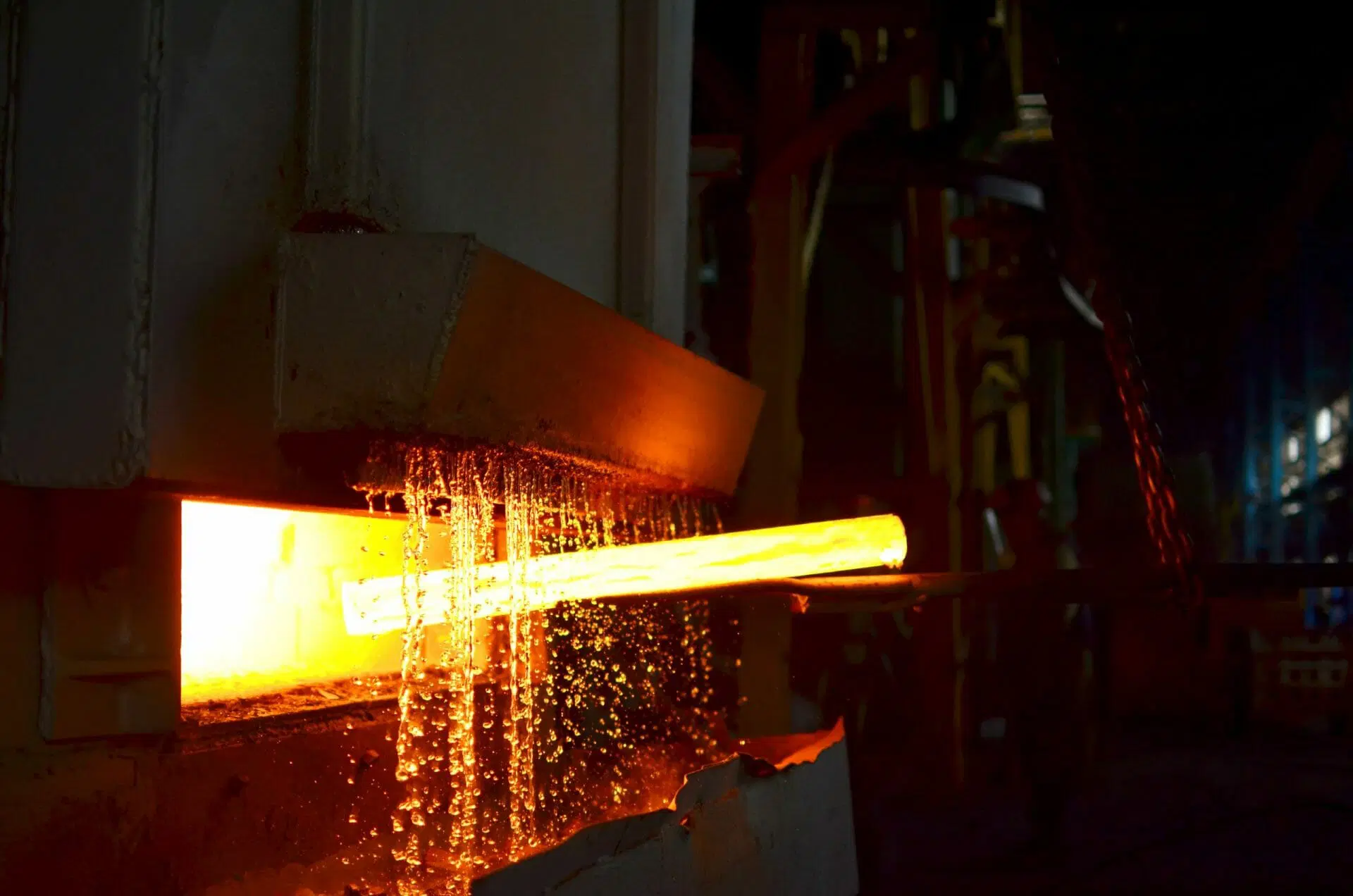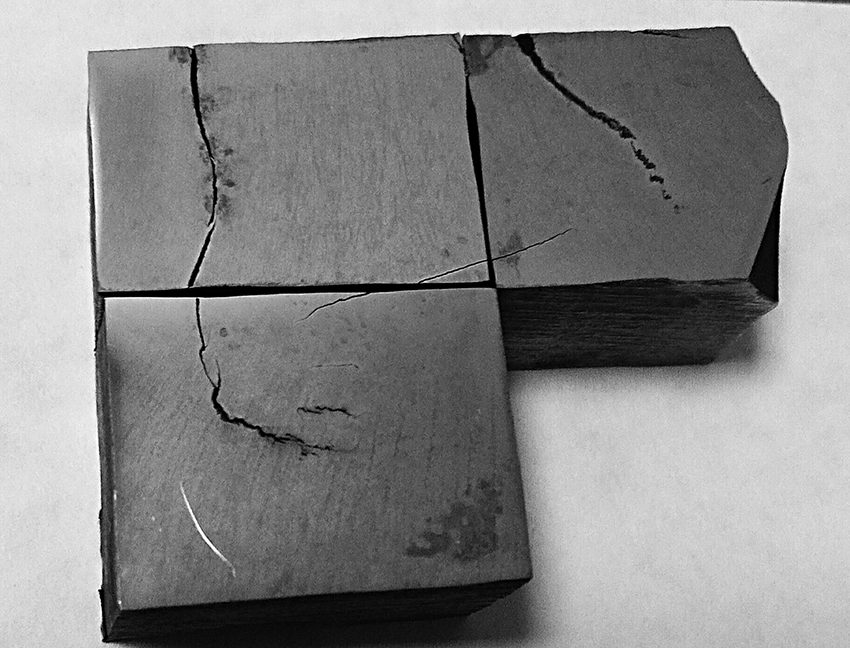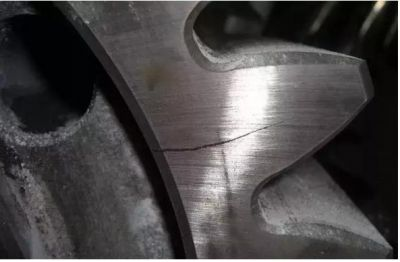Analysis of Crack Formation Causes During Forging and Heat Treatment
2024-12-03 14:31:22 hits:0

Forging and heat treatment are crucial processes in metalworking, significantly impacting the mechanical properties and final quality of metal products. However, cracks that form during forging and heat treatment are a common quality issue. These cracks not only affect the performance of castings but may also lead to scrap and reduce production efficiency. This article will analyze the main causes of crack formation during forging and heat treatment, as well as discuss effective measures to prevent cracks from occurring.
1. Causes of Crack Formation During Forging

Forging involves applying external force to cause plastic deformation of metal materials at high temperatures, shaping them into the desired form. While forging plays an essential role in improving the internal structure of metals, the complex environment and material properties often lead to crack formation. Here are the main causes of cracks during the forging process:
1.1 Material Defects
Defects in the forging material, such as inclusions, pores, and internal cracks, can be amplified during the forging process. Non-metallic impurities or localized brittle areas in the raw material may easily crack during forging, becoming the origin of cracks. This is particularly true for high-strength alloys, tool steels, and similar materials, where internal defects may rapidly expand during forging, leading to cracks.
1.2 Improper Temperature Control
The forging temperature directly affects the plastic flow of the metal. Both excessively high or low temperatures can lead to cracks. When the temperature is too low, the metal lacks sufficient plasticity and flowability, making cracks more likely. When the temperature is too high, the surface of the metal may oxidize, and hard, brittle phases may form internally, increasing the risk of cracking. Therefore, precise temperature control is critical, and the temperature must be maintained within an appropriate range for the material.
1.3 Improper Forging Parameters
Forging process parameters such as pressure, speed, and deformation amount play a significant role in crack formation. If the forging speed is too high, the metal may not flow evenly in the die, leading to stress concentration and crack formation. If the speed is too slow, it may cause localized overheating, resulting in uneven temperature distribution and potential thermal or cold cracking.
1.4 Stress Concentration
If the material experiences uneven stress distribution during forging, it is more likely to form stress concentration areas, especially in cases where the die design is poor or the part shape is complex. Stress concentration in these areas can become the origin of cracks. This is especially common in castings with uneven thickness, where internal and external stress distributions are not uniform, making cracks more likely.
1.5 Die Design and Maintenance Issues
The design and maintenance of forging dies directly affect the metal’s flow and stress uniformity during the forging process. Poor die cooling system design or rough die surfaces can lead to localized overheating or uneven cooling, increasing the likelihood of cracks.
2. Causes of Crack Formation During Heat Treatment

Heat treatment involves heating, holding, and cooling metals to alter their internal structure and improve their mechanical properties. However, improper heat treatment can also cause cracks to form. Below are the main causes of crack formation during heat treatment:
2.1 Uneven Heating Temperature
Uneven temperature distribution during heat treatment is a common cause of cracks. If certain areas of the part are heated unevenly, they may expand differently, creating internal stresses that lead to cracks. This is particularly true for large or complex-shaped parts, where thermal gradients can cause cracks during heating.
2.2 Rapid Cooling Inducing Thermal Stress
During heat treatment, especially during quenching, if the cooling speed is too fast (such as in water quenching), the surface and internal metal may undergo different rates of phase change and stress concentration. In this case, the metal surface contracts quickly, while the interior may expand due to slower cooling, leading to the formation of cold cracks. High-carbon steels and alloy steels are especially prone to brittle cracking due to rapid cooling.
2.3 Improper Heat Treatment Process
The selection of heat treatment parameters has a direct impact on the material's microstructure and properties. If heat treatment parameters such as heating temperature, holding time, and cooling rate are incorrect, uneven internal structures may form, leading to internal stresses and ultimately cracks. For certain materials, such as high-carbon steel, excessive heating temperatures can lead to the precipitation of carbides, forming hard and brittle phases that are prone to cracking.
2.4 Hydrogen Embrittlement
Hydrogen embrittlement is a phenomenon where metal absorbs hydrogen gas, leading to a reduction in toughness and making cracks more likely. During heat treatment, particularly in high-temperature environments, hydrogen may penetrate the metal, reducing its ductility. Hydrogen embrittlement is commonly seen in high-strength steels and certain alloy steels, where cracks can rapidly propagate under stress.
2.5 Residual Stress Not Released
Residual stresses generated during forging, if not effectively released during heat treatment, can lead to cracks. For example, if forged parts are not adequately annealed or stress-relieved, residual stresses remain in the metal. During heat treatment, these stresses may cause new cracks due to temperature changes.
3. How to Prevent Crack Formation
To reduce crack formation during forging and heat treatment, the following measures should be implemented:
3.1 Optimize Process Parameters
Control the forging and heat treatment process parameters, especially temperature and cooling speed. During forging, the temperature should be controlled within the proper range, and the forging speed should be adjusted based on the specific part requirements. In heat treatment, avoid rapid cooling, especially for materials that are difficult to quench. Instead, slower cooling methods such as oil quenching or air cooling should be used.
3.2 Improve Die Design
For forging dies, reasonable design is essential based on the part shape and material properties. Ensure the die cooling system is evenly distributed and efficient, avoiding localized overheating. Regular maintenance of dies should also be conducted to ensure smooth and flat surfaces to prevent stress concentration caused by die defects.
3.3 Material Quality Control
Strictly inspect the material quality before forging and eliminate any defects in the raw materials. Pre-treating the material through processes such as annealing can reduce internal stresses and improve material plasticity, thus reducing the likelihood of crack formation.
3.4 Precisely Select Heat Treatment Processes
Choose appropriate heat treatment processes based on the specific characteristics of the material. Avoid excessive heating temperatures, especially for high-carbon and alloy steels. Proper holding times and cooling rates should be selected to prevent cold cracks. Cooling speeds should be moderate, especially for parts requiring slow cooling.
3.5 Residual Stress Relief
Perform appropriate annealing or stress-relieving treatments before heat treatment to eliminate residual stresses from forging. This step will reduce the risk of cracks during the heat treatment process. For large or complex-shaped parts, consider using segmented heating or cooling methods to avoid stress concentration.

Crack formation during forging and heat treatment is a complex phenomenon that involves various factors, such as process parameters, material defects, and die design. By optimizing process control, improving die design, ensuring material quality, and selecting appropriate heat treatment processes, cracks can be effectively minimized, ensuring high-quality products. For professionals in the forging industry, understanding the causes of crack formation and taking proactive measures to prevent them is key to improving production efficiency and ensuring product quality.

 en
en  fra
fra  de
de  ru
ru  gle
gle  th
th  ara
ara  it
it  jp
jp  kor
kor  zh
zh 


